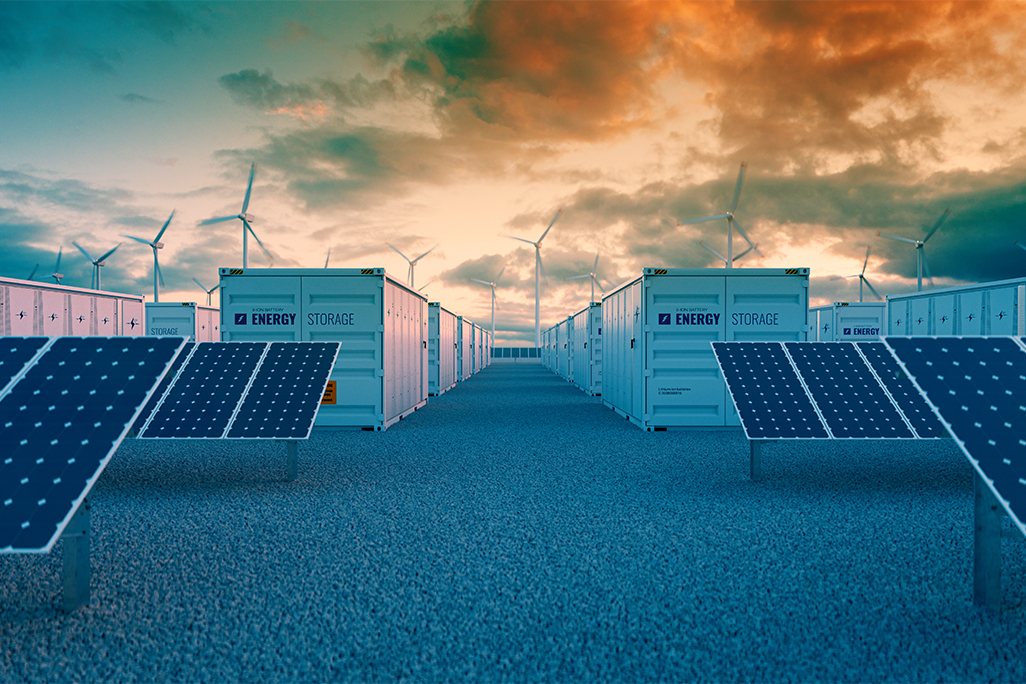How the interface between AI and net zero is shaping up in the UK and beyond
Published on 22nd November 2022
Can artificial intelligence transform energy efficiency and help businesses achieve their net-zero objectives?

Through the use of artificial intelligence (AI), businesses could solve a number of problems including, crucially, the transition to a net-zero economy. But there is a clear tension between using AI to promote more efficient use of energy and the fact that AI also poses a challenge to net-zero objectives because of its high energy usage.
Optimisation of energy use
Optimising energy use is one way that AI can assist the transition to net zero. Optimisation challenges can be broken down into customer optimisation, commercial optimisation and operational optimisation.
Customer optimisation enables energy suppliers to draw on personalised customer demand forecasts. The profile of demand for energy in the UK is likely to change rapidly. For example, charging electric vehicles is likely to create significant demand for energy overnight, where previously this was a quieter period. By analysing patterns at the individual consumer level, AI can play a vital role in making predictions about likely aggregated levels of demand. Suppliers can use this information to plan the provision of energy where and when it is wanted and from the most appropriate source.
Commercial optimisation supports energy suppliers in matching supply with demand. Doing this effectively has become more complex with the volatility of production by renewable energy sources such as wind or sunshine. Additionally, commercial optimisation enables energy generation businesses to choose better infrastructure locations. Vast quantities of weather data can be fed into an AI system which can provide information on the most suitable location for generation assets such as wind or solar farms.
Operational optimisation simplifies asset maintenance challenges. It can enable the prediction of asset failures while optimising the operational response. For example, computer vision can monitor performance and spot potential wear and tear before a breakdown actually happens. Similarly, digital twins can track performance and identify faults pre-emptively. These techniques reduce the amount of downtime needed for maintenance of assets thereby allowing them to be active for longer periods.
This technology is already in place in the rail sector, for example. Images from trains fitted with cameras are analysed by AI to identify track maintenance requirements. AI could also be used to monitor when components of a wind turbine are beginning to fail or when the boiler in a building begins to take longer to heat up (a sign of inefficiency); in both cases AI would enable the proactive replacement of parts. Ensuring efficient functioning of a building's heating system could help it achieve a higher energy efficiency rating.
Wider AI applications
Another notable development that uses AI to advance net-zero objectives is Climate TRACE, launched at the United Nations' COP27 conference.
This tool uses machine learning to analyse over 59 trillion bytes of data from more than 300 satellites, more than 11,100 sensors, and numerous additional sources of emissions information from all over the world. It enables an independent inventory of greenhouse gas emissions to be developed that is not dependent on emissions reporting and can be used to understand where emissions are underreported.
In the UK, the government has announced a new "AI for Decarbonisation" programme. An initial funding round will be used to create a "virtual centre of excellence" on using AI for decarbonisation through to March 2025. The initial round will also offer funding for innovation projects in this field. Further funding is planned, focused on priorities to be set by the new centre of excellence.
Problems as a net-zero enabler?
AI, as with any intensive use of processing power, uses a large amount of energy. In May 2021, the European Parliament reported that "data centres, digital networks, and other ICT consume about 7% of the world's electricity today, and the share is projected to increase to 13% by 2030". On top of digital infrastructure's requirements, AI is itself a processing-hungry technology. AI "machine learning" systems analyse vast quantities of data in order to find and map the patterns in that data. Each individual data point is analysed and each node within the machine learning's mapping matrix is recalibrated to perfect the mapping. This iterative process uses huge amounts of processing capacity, which in turn consumes significant amounts of energy. As a result the use of AI-based tools to achieve emissions reductions could be counter-productive if not carefully managed.
Nevertheless, the European Parliament Special Committee on Artificial Intelligence in a Digital Age noted in its November 2021 draft report that "AI has the potential to reduce global greenhouse gas emissions by up to 4% by 2030".
The pro-decarbonisation balance
So, how can businesses square the circle of using AI to achieve net-zero objectives? Broadly speaking, there are two ways of mitigating the potential impact of an increased use of AI on net zero objectives.
The first is to ensure that data centres are powered by renewable energy. Many providers already do this to varying degrees. The major cloud-services providers are among the largest global purchasers of green electricity, with their purchases funding the expansion of renewables capacity. Many are also innovating in materials or cooling methods, such as recycling wastewater and using "living bricks" (where the main component is based on mushrooms). Increasingly data centres are being placed in colder parts of the world to reduce the energy consumption requirement for heat reduction. Waste heat can also be captured and either piped to locations where it is needed or converted back into electricity through "waste heat to power" solutions.
Secondly, businesses should ensure that they do not generate and analyse data – or deploy AI tools – for the sake of it. The process of involving AI in decision-making and problem-solving should start by asking the question "what problem am I trying to solve?" followed by "what data is needed to achieve a solution?", and "is AI the best option?" An objective, quantitative impact assessment and cost-benefit analysis should clearly demonstrate that the advantages of use outweigh its disadvantages. Indeed, impact assessments (including data minimisation) are increasingly being used to anchor regulatory requirements for AI in other contexts. Sustainability considerations can be embedded into that work.
The ready availability and relatively low cost of cloud processing has reduced the incentives to design processing efficiency into software. Some businesses will take this approach of their own initiative but legislators are starting to take action to force the pace of this shift – France is in the vanguard. This design consideration also impacts on the architecture of hardware and is contributing to the increasing use of edge processing. The European Commission has recently announced that it intends to introduce environmental labelling for data centres and energy labelling for computers in the coming years.
Osborne Clarke comment
The UK's overall net-zero strategy is currently in a transition stage where it is necessary to decide how best to coordinate and integrate new energy-generation technologies and business models into the existing system. New technologies such as renewable energy and battery storage represent a massive change to the existing energy system, posing a challenge in matching supply and demand. Generation from renewable sources is often more difficult to control compared to fossil fuel-based generation. Storage, therefore, becomes much more important to enable periods of oversupply to be used to supplement times of undersupply. AI can be used to predict energy supply and demand as well as to identify the best way to respond to this demand and any over or under supply.
The increasing efficiency of data centres will go some way to alleviating the environmental impact of increased AI usage. Ensuring that power for AI is generated from renewable sources is also essential to reduce the carbon footprint of data centres – although unless new renewable generation capacity is created to power data centres, using green power may simply remove capacity from other potential customers. Overall, careful measurement and analysis of the embodied carbon in the supply chain for an environmentally focused AI system is needed to ensure that using AI to promote net zero objectives can contribute to a net reduction in emissions.
If you would like to discuss any of the issues raised in this article, please don't hesitate to contact the authors or your usual Osborne Clarke contact.




